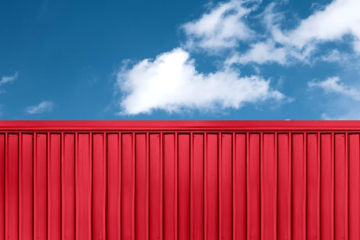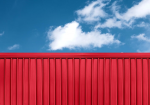The Different Types of Commercial Roofing Systems: Which is Right for Your Business?

Choosing the right roofing system for your commercial property is crucial to ensuring the longevity, functionality, and efficiency of your building. With various roofing options available, each offering distinct benefits and considerations, selecting the best system for your business can be a daunting task. In this guide, we’ll explore the different types of commercial roofing systems and help you determine which is right for your business.
1. Built-Up Roofing (BUR)
Overview: Built-Up Roofing (BUR) is one of the oldest and most reliable roofing systems, consisting of multiple layers of asphalt or coal tar, reinforced with layers of fiberglass or organic felts. The final layer is typically topped with gravel or a reflective coating.
Benefits:
- Durability: BUR systems are known for their long-lasting performance and resistance to harsh weather conditions.
- Low Maintenance: With proper installation, BUR roofs require minimal maintenance.
- Cost-Effectiveness: BUR systems are generally less expensive compared to other commercial roofing options.
Considerations:
- Installation Time: BUR installation can be time-consuming and may require a professional with specific expertise.
- Weight: The multiple layers add significant weight, which might require additional structural support.
2. Modified Bitumen Roofing
Overview: Modified Bitumen Roofing is an evolution of BUR technology, incorporating polymer-modified asphalt for enhanced performance. It’s available in both torch-down and peel-and-stick varieties.
Benefits:
- Flexibility: Modified bitumen roofs are highly flexible and adapt well to various temperatures.
- Ease of Installation: The peel-and-stick variety allows for faster installation compared to traditional BUR systems.
- UV Resistance: Many modified bitumen systems include a reflective surface that enhances UV resistance.
Considerations:
- Cost: Modified bitumen roofing can be more expensive than BUR.
- Maintenance: While generally low-maintenance, periodic inspections are recommended to address any potential issues.
3. EPDM Roofing
Overview: Ethylene Propylene Diene Monomer (EPDM) is a type of synthetic rubber roofing known for its durability and flexibility. It’s often used for flat or low-slope roofs.
Benefits:
- Durability: EPDM is highly resistant to UV radiation, ozone, and extreme temperatures.
- Low Maintenance: Once installed, EPDM requires minimal maintenance and has a long lifespan.
- Energy Efficiency: EPDM can be coated with reflective materials to enhance energy efficiency.
Considerations:
- Appearance: EPDM roofs are typically black, which may absorb heat and increase cooling costs unless coated with reflective materials.
- Seams: Proper installation is crucial to avoid issues with seams and potential leaks.
4. TPO Roofing
Overview: Thermoplastic Olefin (TPO) is a single-ply roofing membrane known for its energy efficiency and heat reflectivity. It’s a popular choice for commercial buildings due to its versatility and environmental benefits.
Benefits:
- Energy Efficiency: TPO roofs have high reflectivity, which helps reduce cooling costs.
- Durability: TPO membranes are resistant to tears, punctures, and impact damage.
- Environmentally Friendly: TPO is often made from recyclable materials.
Considerations:
- Cost: TPO roofing can be more expensive than some traditional systems.
- Installation Quality: The performance of TPO roofing heavily relies on proper installation and seam welding.
5. PVC Roofing
Overview: Polyvinyl Chloride (PVC) roofing is a single-ply membrane that offers excellent durability and resistance to chemicals, fire, and moisture. It’s known for its white, reflective surface, which enhances energy efficiency.
Benefits:
- Chemical Resistance: PVC is highly resistant to chemicals and pollutants, making it ideal for industrial environments.
- Energy Savings: The reflective nature of PVC helps reduce cooling costs and improves energy efficiency.
- Longevity: PVC roofs have a long lifespan and are resistant to UV rays and weathering.
Considerations:
- Cost: PVC roofing can be on the pricier side, but the long-term benefits often justify the initial investment.
- Installation: Professional installation is crucial to ensure proper seam welding and performance.
Conclusion
Choosing the right commercial roofing system depends on various factors including your budget, building structure, and specific needs. Each roofing option offers unique benefits and potential drawbacks. For expert advice and professional installation, contact Old Time Roofing today. Our team is here to help you select and install the best roofing system for your business. Call us at or visit our website to get started and ensure your commercial property is protected and efficient!
This post was written by Ted Williams! Ted is the owner of A Old Time Roofing which is the premier roofing contractor Clearwater Contractor! Ted is a Master Elite Weather Stopper GAF Roofing Contractor, a double award winner of Best Steep-Slope Contractor from GAF and achiever of Master Elite Consumer Protection Excellence from GAF. He has been serving the Pinellas County area since 1978. Old Time Roofing has a tradition of quality workmanship, servicing residential and commercial properties.
















